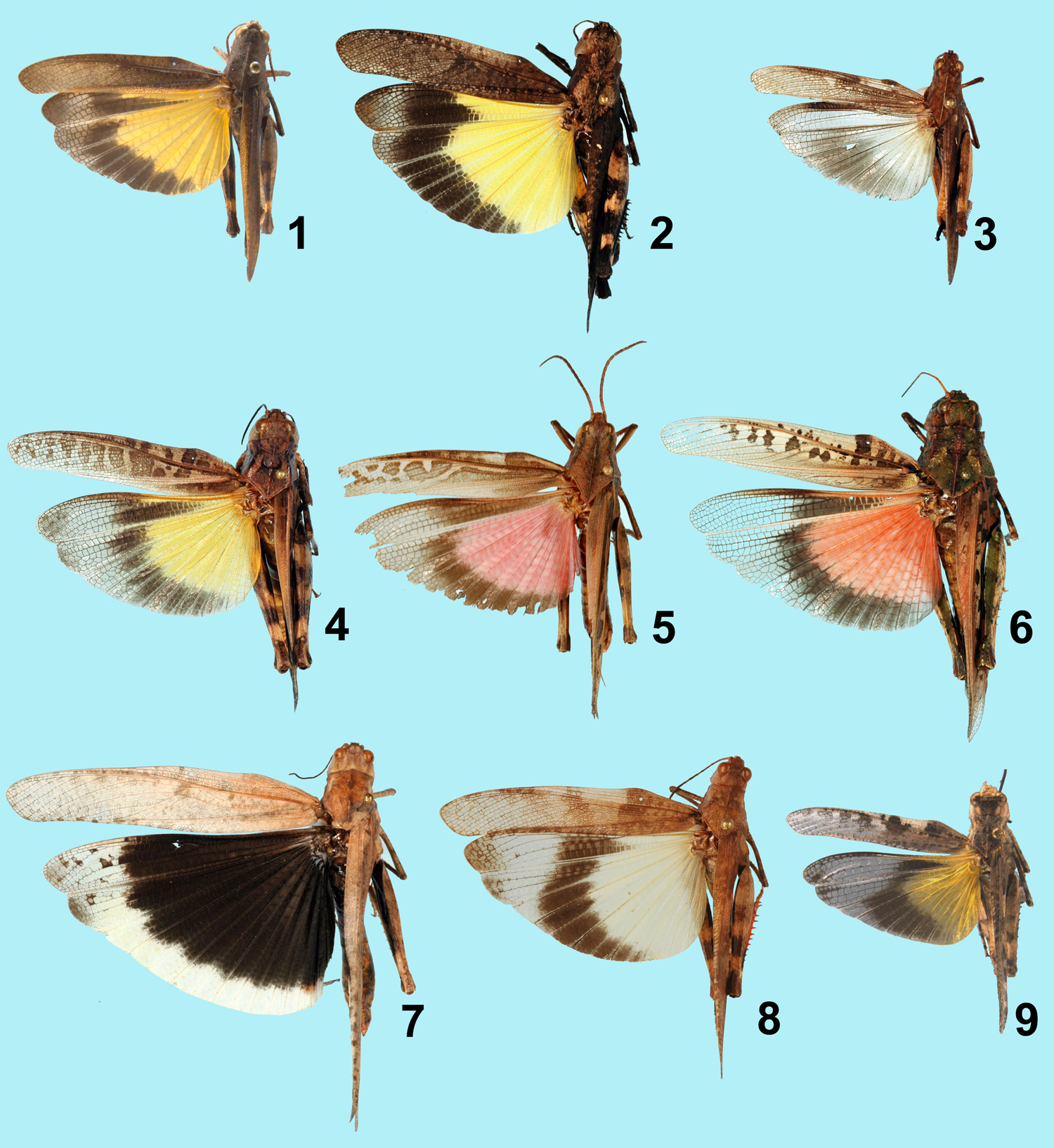Grasshoppers ot the Great Smoky Mountains National Park
by Matt E. Dakin and JoVonn G. Hill
Gregory's Bald with view of Cade's Cove in the distance on 24 June 2007
Due to recent concern over what appears to be rapidly declining levels of biodiversity, Discover Life in America (DLIA) initiated the All Taxa Biodiversity Inventory (ATBI), whose main goal is to catalog all the living organisms in the Great Smoky Mountains National Park. Taxonomists from all over the world have been awarded grants and volunteered their time to this cause. This project will provide checklists, reports, databases, maps, and natural history information for future reference in monitoring biodiversity in the park. As part of this project the authors have been surveying the Orthoptera and associated orders of the Great Smoky Mountains National Park for several years. Thus far, we have documented approximately 100 species of Orthopteroid insects as occurring in the park, along with spatial and temporal information. This includes 45 species belonging to the Orthoptera sub-order Caelifera (grasshoppers, grouse locusts, and pygmy mole crickets), as well as 46 species belonging to the sub-order Ensifera (camel, cave, mole, true crickets, and katydids). Other orders under study include Phasmida (walking sticks), Mantodea (mantids), and Blattaria (roaches).
JoVonn and Matt at Andrew's Bald 21 August 2006
Initial collections were made by park staff and volunteers by running malaise and pitfall traps at locations throughout the park. In 2001 Matt began sorting insects to order from bulk samples collected by Discover Life In America's staff, and eventually began indentifying the Orthoptera. Matt was the recipiant of several DLIA mini grants that allowed him to travel to the park to make collections and to curate the Park's collection. In 2006, he allowed me to join him on two collecting trips to the park, and in 2007 Matt decided that he would hand the major field work portion of the project over to me. From 2001-2007 the authors have sampled various habitats throughout the park. These collections represent over 50 individual sample sites from a majority of the major habitat types in the park, including the East and West Foothills Parkways. Collections were generally made by netting individuals after they had been flushed or by a limited amount of blacklighting. Also, the literature, the Great Smoky Mountains National Park Collection and the Mississippi Entomological collection were searched for additional park records.
Oedipodinae of the Great Smoky Mountains National Park: 1 Arphia sulphurea 2. Arphia xanthoptera 3. Chortophaga viridifasciata 4. Hippiscus ocelote 5. Pardolophora apiculata 6. P. phoenicoptera 7. Dissosteria carolina 8. Trimerotropis maritima 9. Trachyrhachys kiowa
Thus far, at total of 37 species of Acrididae (grasshoppers) have been collected in the park. The distribution of species within the park has proven to be biogeographically interesting. Some typically southern species are replaced by northern species at higher altitudes. Since much of the park is forested, flightless grasshoppers are often common. Eleven species in the genus Melanoplus display this trait and as a result often have restricted distributions. Five of these are members of the Melanoplus viridipes species group which seems to have its center of distribution in the park. There are several notable species missing from this list that could likely be discovered in the park, such as some species that occupy rock outcrops (ie, Spharagemon saxatile Morse and Trimertopis saxatilis McNeil). Such habitat has been searched in the park, but no specimens were found. Also, Encoptolophus sordidus (Burmeister) has been collected just outside of the park bounday in North Carolina, but has not yet been found within the park.
Matt plans on continuing working with the park collection to ensure that the everything is correctly identified and accounted for. For more infomation of the Orthopteroid fauna of the park (including species distribuiton within the park) go to http://www.dlia.org/atbi/species/Animalia/Arthropoda/Insecta/Orthoptera/Caelifera/Acrididae/index.shtml
FAMILY ACRIDIDAE
Subfamily Gomphocerinae
Chloealtis conspersa (Harris)
Chorthippus curtipennis (Harris)
Dichromorpha viridis (Scudder)
Eritettix simplex (Scudder)
Orphulella pelidna (Burmeister)
Syrbula admiriabilis (Uhler)
Subfamily Acridinae
Metaleptea brevicornis (Johannson)
Subfamily Oedipodinae
Arphia sulphurea (Fabricius)
Arphia xanthoptera (Burmeister)
Chorthophaga viridifasciata (DeGeer)
Dissosteira carolina (Linnaeus)
Hippiscus ocelote (Saussure)
Pardalophora apiculata (Harris)
Pardalophora phoenicoptera (Burmeister)
Spharagemon bolli Scudder
Trachyrhachys kiowa (Thomas)
Subfamily Cyrtacanthacridinae
Schistocerca americana (Drury)
Schistocerca damnifica (Saussure)
Subfamily Melanoplinae
Boonacris variegata (Scudder)
Dendrotettix zimmermanni (Saussure)
Melanoplus acrophilus Hebard
Melanoplus bivittatus (Say)
Melanoplus decoratus Morse
Melanoplus differentialis differentialis (Thomas)
Melanoplus divergens Morse
Melanoplus deceptus Morse
Melanoplus femurrubrum (DeGeer)
Melanoplus gracilis (Bruner)
Melanoplus hubbelli Hebard
Melanoplus keeleri Thomas
Melanoplus punctulatus punctulatus (Scudder)
Melanoplus sanguinipes vulturnus Gurney & Brooks
Melanoplus cherokee Hebard
Melanoplus scudderi scudderi (Uhler)
Melanoplus similis Morse
Melanoplus tribulus Morse
Melanoplus walshii Scudder





